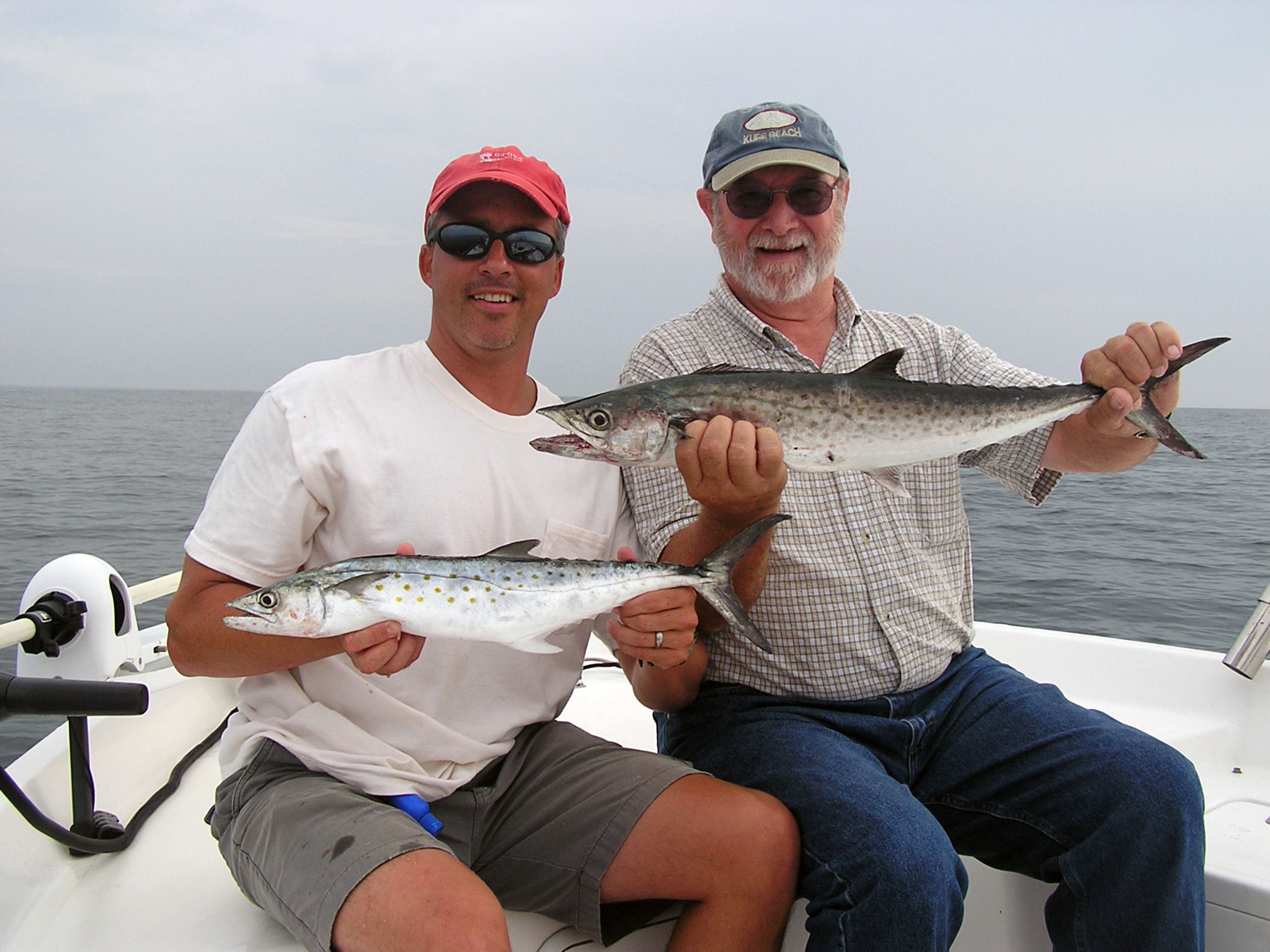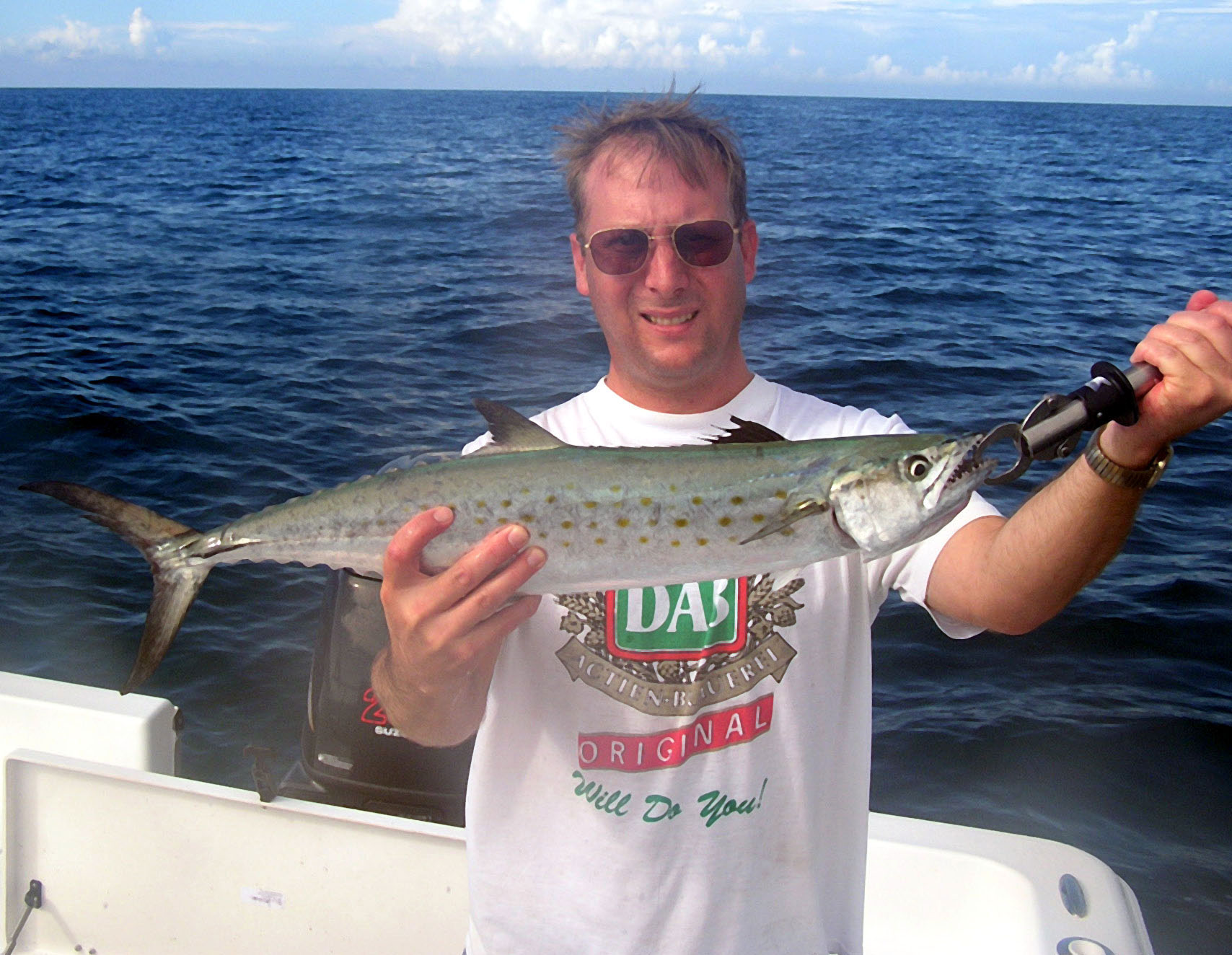Spanish Mackerel

Latest News and Resources
-
Coastal Pelagics Management Board Annual Meeting Presentations — Oct. 2024
-
Coastal Pelagics Management Board Annual Meeting Materials — October 2024
-
Proceedings of the Coastal Pelagics Management Board – August 2024
-
Proceedings of the Coastal Pelagics Management Board – May 2024
-
Coastal Pelagics Management Board Spring Meeting Supplemental Materials — April 2024
-
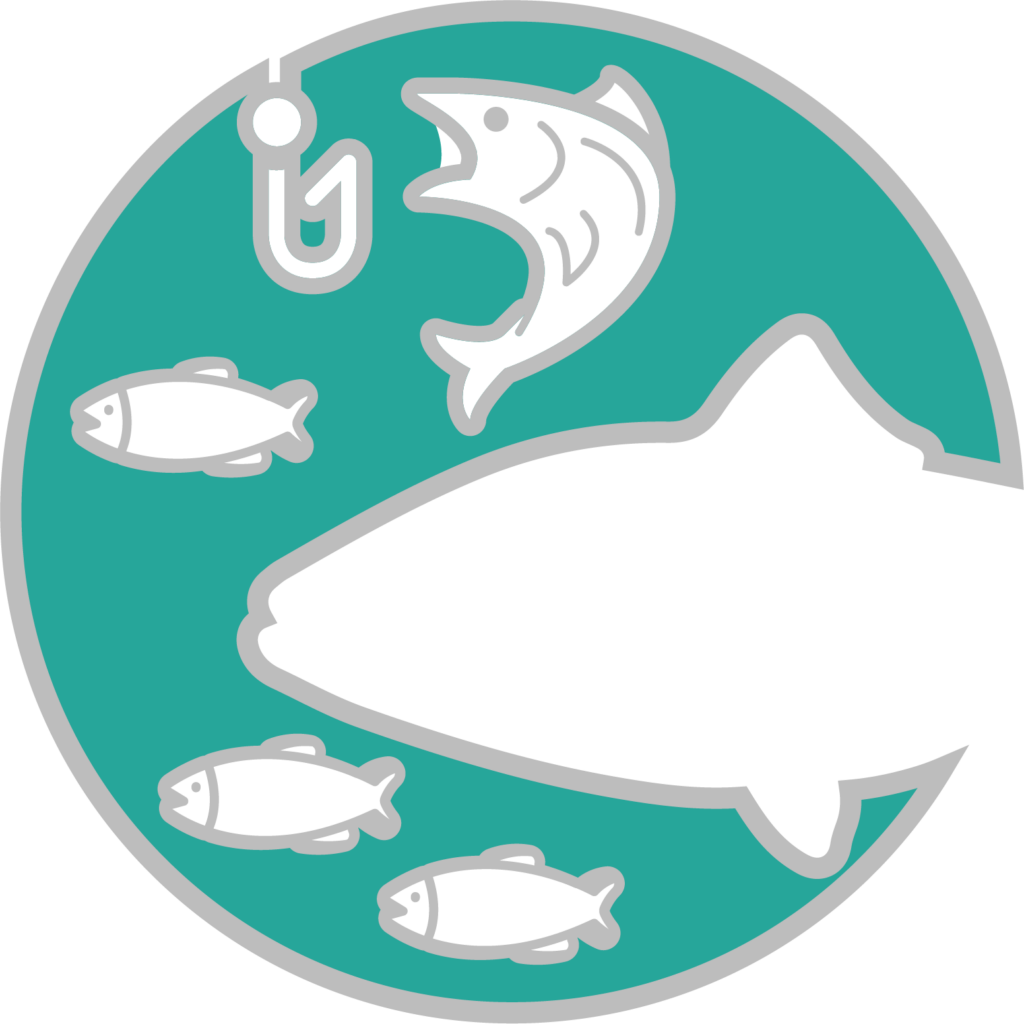
Population Abundance
Not overfished
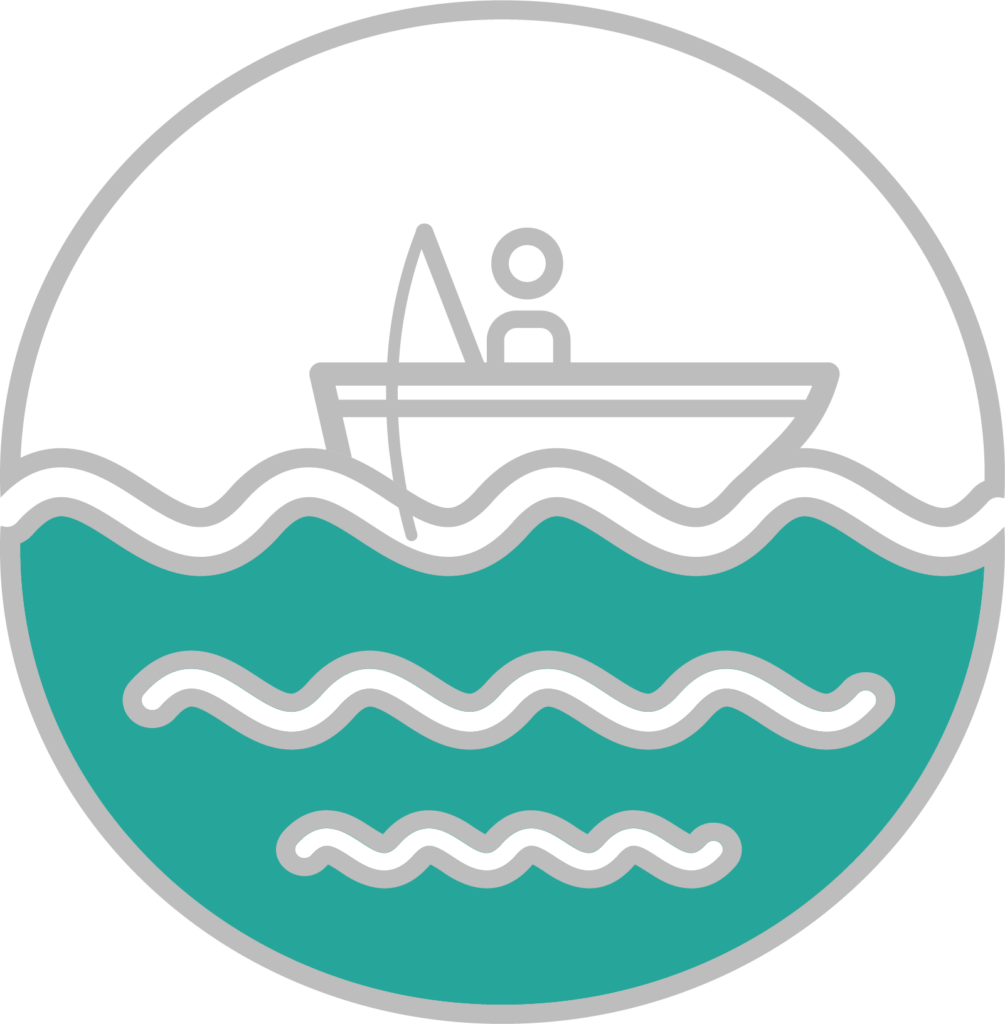
Fishing Mortality
Overfishing not occurring
Current Status
Stock status based on 2022 stock assessment update. However, if the high fishing mortality rate seen in 2020 continues, the stock may fall into an overfishing status.
Meeting Calendar
Next Meeting
-
Dec 8–12, 2025
South Atlantic Fishery Management Council
Hilton Garden Inn Outer Banks/Kitty Hawk: 5353 N. Virginia Dare Trail, Kitty Hawk, NC
Contacts
- Emilie Franke, FMP Coordinator (EFranke@asmfc.org)
- Management Board, Spud Woodward, Chair
- South Atlantic Species Advisory Panel, Craig Freeman, Chair
Species Information
Spanish mackerel are fast-swimming fish found along the eastern US and Gulf coasts. Known for forming large schools, they can move quickly from one area to another, making them exciting targets for anglers. These fish prefer open waters but are also found around reefs and estuaries. They can live up to 12 years and grow several pounds. Spanish mackerel migrate seasonally, staying near Florida in the winter and moving north in the spring and summer to spawn in places like Massachusetts and New York. Both commercial and recreational fisheries seek Spanish mackerel, with most catches coming from Florida and North Carolina. Managed with quotas, size limits, and seasonal regulations, Spanish mackerel populations are currently healthy, ensuring they remain a popular and sustainable choice for fishing communities.
Management
State waters management of Spanish mackerel along the Atlantic Coast is coordinated through the Commission’s Coastal Pelagics Management Board (formerly part of the South Atlantic State/Federal Fisheries Management Board). Management measures for Spanish mackerel include size limits, recreational bag limits, and commercial trip limits. The Commission’s Omnibus Amendment for Spot, Spotted Seatrout, and Spanish Mackerel was approved in 2011. Specific to Spanish mackerel, the Amendment includes commercial and recreational management measures, adaptive management measures, and a process for Board review and action in response to changes in the federal regulations. This allows for complementary management throughout the range of the species.
Addendum I (2013) established a pilot program to allow states to reduce the Spanish mackerel minimum size limit for the commercial pound net fishery to 11½ inches from July through September for the 2013 and 2014 fishing years. The Addendum responded to reports about the increased incidence of Spanish mackerel ¼ to ½ inch short of the 12-inch fork length minimum size limit in pound nets during the summer months. The program reduced dead discards of these shorter fish and was extended through the 2018 fishing season. After 2018, North Carolina, the only state to implement the reduced minimum size limit, stopped requesting approval of the program due to no further request from pound net fishermen to continue the program, and due to recent closures in federal waters.
Stock Status
Cooperative management by the Commission and the South Atlantic Fishery Management Council (SAFMC) has successfully rebuilt Spanish mackerel stocks after years of low biomass and increased fishing pressure during the 1980s and 1990s.
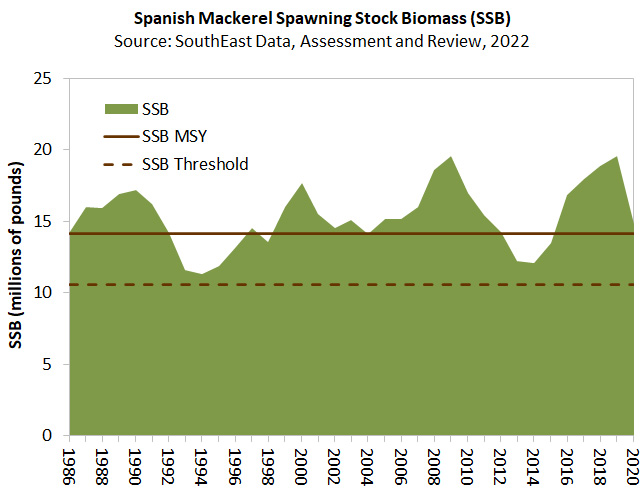
In 2012, Spanish mackerel was assessed and peer reviewed through the SouthEast Data, Assessment and Review (SEDAR). The results of the 2012 assessment (SEDAR 28) indicate that the stock is not overfished and it is not experiencing overfishing. In 2022, an operational assessment (i.e., update to the last assessment) was completed through the SEDAR process with data through 2020. This most recent assessment (SEDAR 78) indicates the same stock status: the stock is not overfished and it is not experiencing overfishing based on a three-year average of fishing mortality (2018-2022). However, in the terminal year of the assessment (2020), the model found the estimated fishing rate to be above the maximum fishing mortality threshold (MFMT) indicating that if the 2020 overfishing rate continues, the stock may fall into an overfishing status.
Commercial & Recreational Fisheries
Spanish mackerel support significant recreational and commercial fisheries in South Atlantic waters and the species is gaining importance in the Mid-Atlantic. Many anglers target and catch Spanish mackerel to use whole fish as bait for big game fishing.
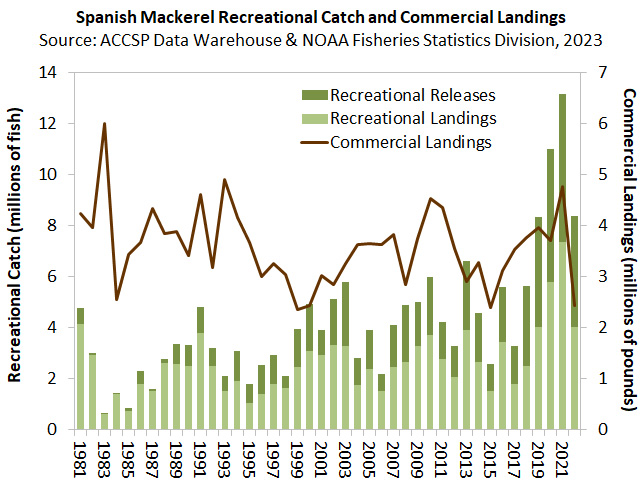
Total 2022 calendar year landings were estimated at 6.5 million pounds, with commercial and recreational fisheries harvesting approximately 38% and 62% of that total, respectively. Coastwide commercial landings have generally been below four million pounds per year since 1995. 2022 calendar year commercial landings are estimated at 2.4 million pounds, which was a 49% decrease from the previous year. 52% of the commercial landings in 2022 occurred in Florida, with most of the remaining harvest occurring in North Carolina.
According to the Marine Recreational Information Program Fishing Effort Survey, recreational anglers harvested approximately 4.0 million Spanish mackerel in the 2022 calendar year, which was a large decrease from the previous year. Florida and North Carolina have historically accounted for the majority of recreational landings in both number and weight. The number of recreational releases has generally increased over time. In 2022 there were 4.3 million Spanish mackerel released alive, which is lower than 2020-2021 but higher than all years prior to 2020.
Life History
A fast swimming fish, known to gather in large schools and travel great distances, Spanish mackerel (Scomberomorus maculatus) can be found throughout the coastal waters of the eastern US and the Gulf. Their migratory and schooling nature often frustrate anglers, as large congregations of fish can be found in an area one day and gone the next. Spanish mackerel prefer open water but are sometimes found over deep grass beds and reefs, as well as in shallow estuaries. They can live for up to 12 years. Females spawn by age two, releasing between half a million and 1.5 million eggs. Larvae grow quickly, reaching lengths of 12 to 15 inches in a year. Older fish may weigh several pounds. Along the Atlantic coast, Spanish mackerel range from the Florida Keys to New York, and occasionally as far north as New England. These fish winter off Florida, moving northward to North Carolina in early April and to New York in June. Later in the year, as waters cool, Spanish mackerel return to warm Florida waters. The South Atlantic stock along the Atlantic coast is distinct from the Gulf Spanish mackerel.
News & Resources
Explore recent news, management updates, and scientific reports to gain a deeper understanding of ongoing conservation efforts and sustainability strategies.
-
-
-
The Coastal Pelagics Management Board of the Atlantic States Marine Fisheries Commission convened in the Jefferson Ballroom of the Westin Crystal City Hotel, Arlington, Virginia, via hybrid meeting, in-person, and webinar; Wednesday, August 7, 2024, and was called to order at 1:15 p.m. by Chair Robert E. Beal.
-
The Coastal Pelagics Management Board of the Atlantic States Marine Fisheries Commission convened in the Jefferson Ballroom of the Westin Crystal City Hotel, Arlington, Virginia, via hybrid meeting, in-person and webinar; Wednesday, May 1, 2024, and was called to order at 10:15 a.m. by Chair Spud Woodward.
-
-
-
-
Overview of Atlantic Coast State Spanish Mackerel Fisheries
-
-
-
-
-
The Coastal Pelagics Management Board of the Atlantic States Marine Fisheries Commission convened in the Jefferson Ballroom of the Westin Crystal City Hotel, Arlington, Virginia, via hybrid meeting, in-person and webinar; Wednesday, January 24, 2024, and was called to order at 10:30 a.m. by Chair Spud Woodward.
-
-
Prepared for the Commissioner Manual
Get Hooked on ASMFC News
Dive into the latest updates and catch all the important news by joining our newsletter mailing list. Stay in the loop with meeting agendas, fisheries management news, and more.






